Over the last few years, we have taken a detailed and in depth look at the emails received by our team over the "Black Friday" weekend. Keeping with tradition, we've broken down all the key trends and stats from "Black Friday" 2020 to see exactly what went down...
Our email sample
Last year, we scoured our inboxes to find all of the emails sent out over the weekend. This year, we noticed many businesses trying to get a head start and sending out their first emails up to two weeks before the big day. Our 2020 sample is made up of all the "Black Friday" and Cyber Monday related emails we received to our research account from 13th November.
We managed to to identify campaigns sent by brands ranging from small businesses to huge corporations, and covered sectors including travel, fashion, events, beauty and homeware.
All the stats from 2020
Which types of businesses got involved in "Black Friday"?
We had a fairly mixed sample again this year, but it's safe to say fashion retailers again made up the overwhelming majority of the email promotions we received.
We saw emails from fashion brands ranging from huge names like Topshop, Bershka and Timberland to online giants such as ASOS and ISAWITFIRST, with some smaller businesses also getting in on the action. These made up almost 40% of our sample.
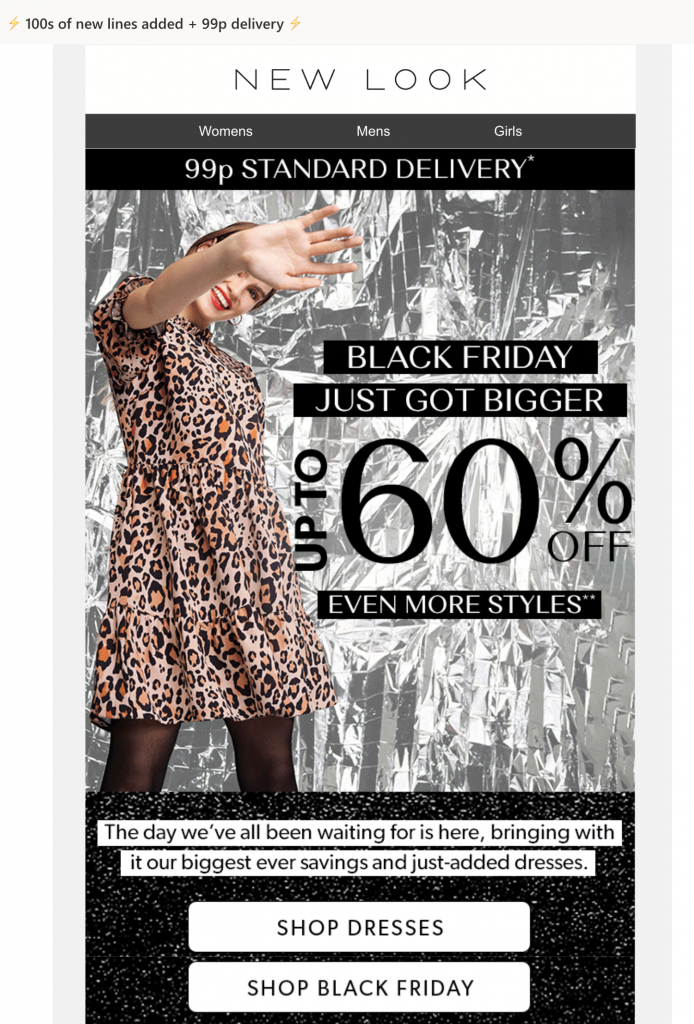
Fashion brands like New Look were again leading the charge this year.
Travel companies such as Booking.com and Opodo were also keen to get involved, and shared second place with beauty brands, including Feelunique and printing services such as Vistaprint.
In addition, we received a number of email promotions from the business services, educational training, and gifting sectors.
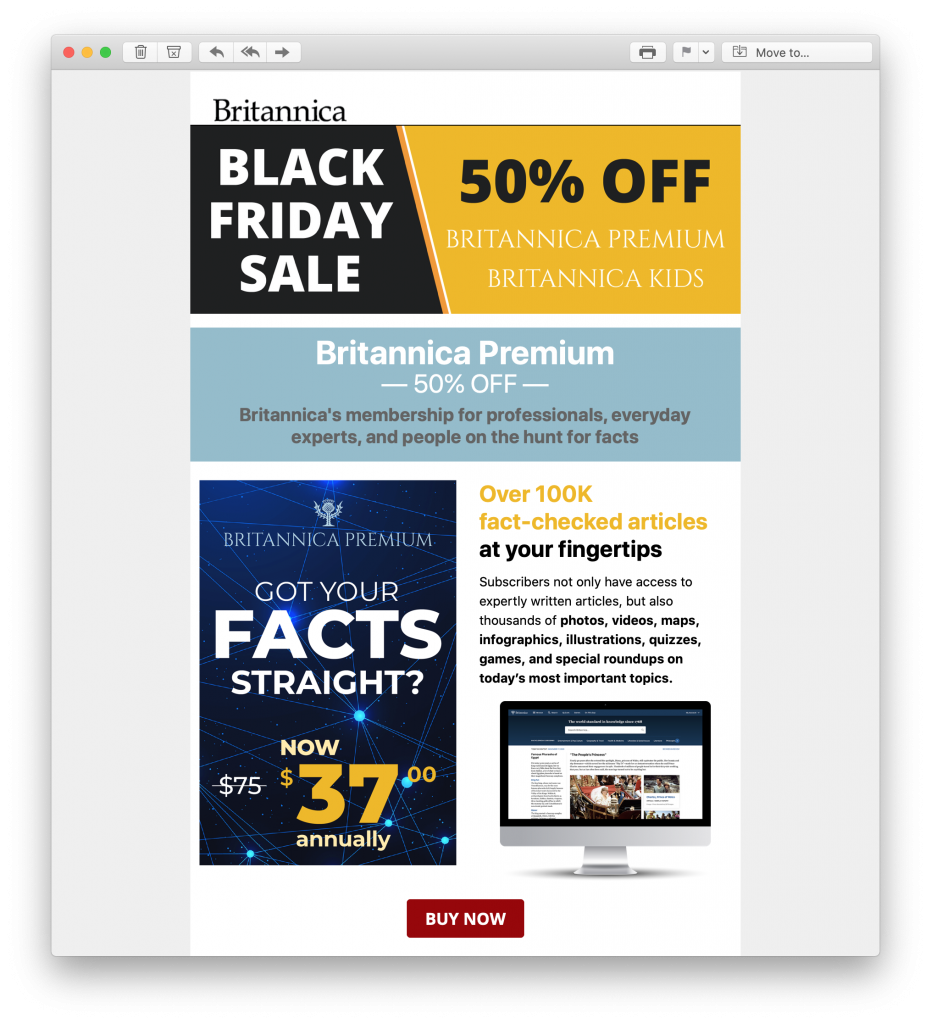
Many other sectors also ran "Black Friday" email promotions this year, including Encyclopaedia Britannica.
What were the offers like?
The way businesses present their deals is often critical to the overall success of the campaign. Like in previous years, the majority of businesses this year opted for a percentage discount, with just under 7% choosing to offer a monetary discount instead.
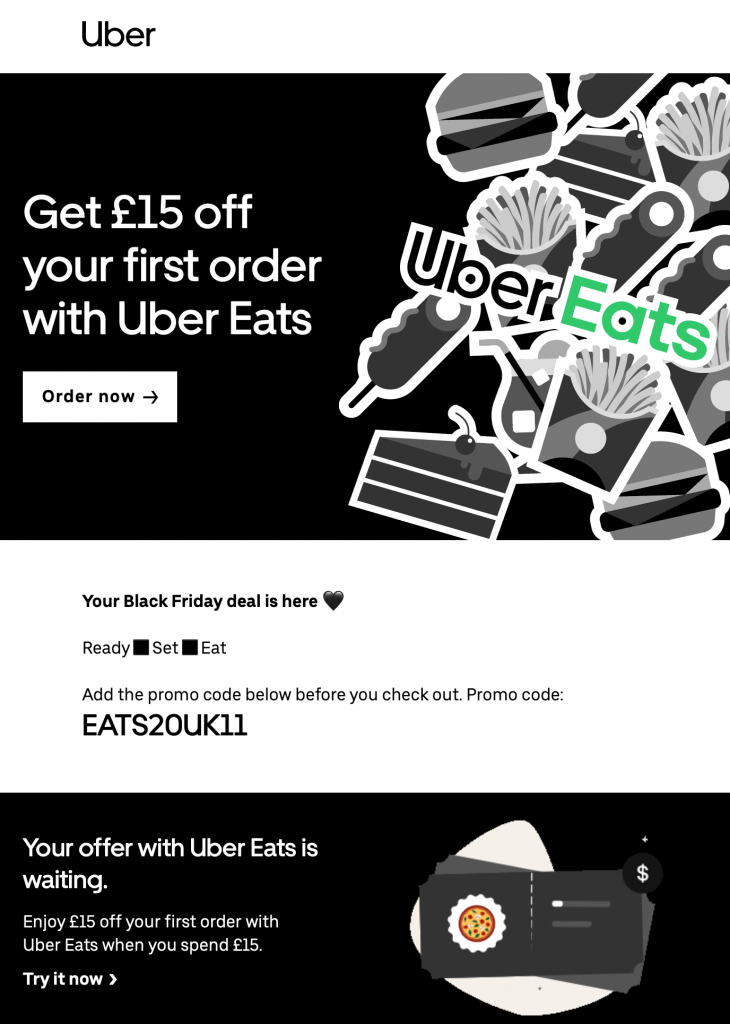
Uber stood out from the crowd this year by offering a monetary discount instead of a % discount.
Where over half (55%) of the businesses in our sample opted for "up to x% off", only 15% offered a general discount across all products.
Just like in 2019, the most common discount we observed this year was 50%, which was promoted by around 1 in 3 businesses:
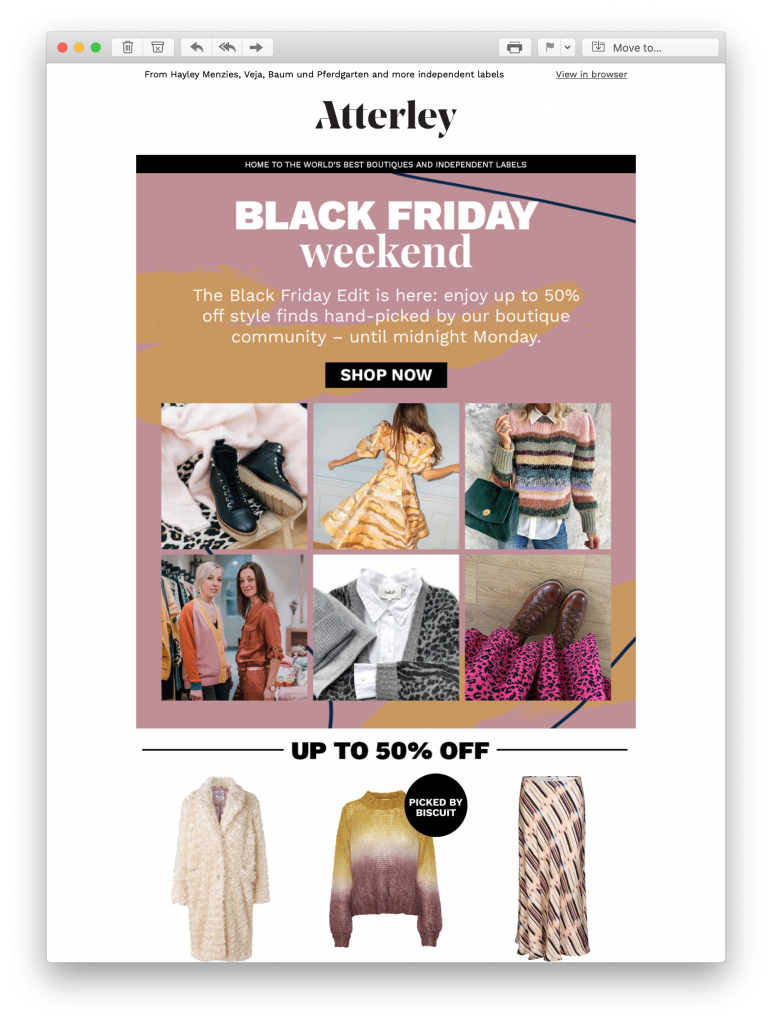
50% off was a very popular discount this year - as shown in this email by Atterley.
When did the first "Black Friday" emails go out?
One trend we noticed this year was businesses getting started early. The earliest email we received with reference to "Black Friday" was sent by Reebok, two weeks in advance on November 13th:
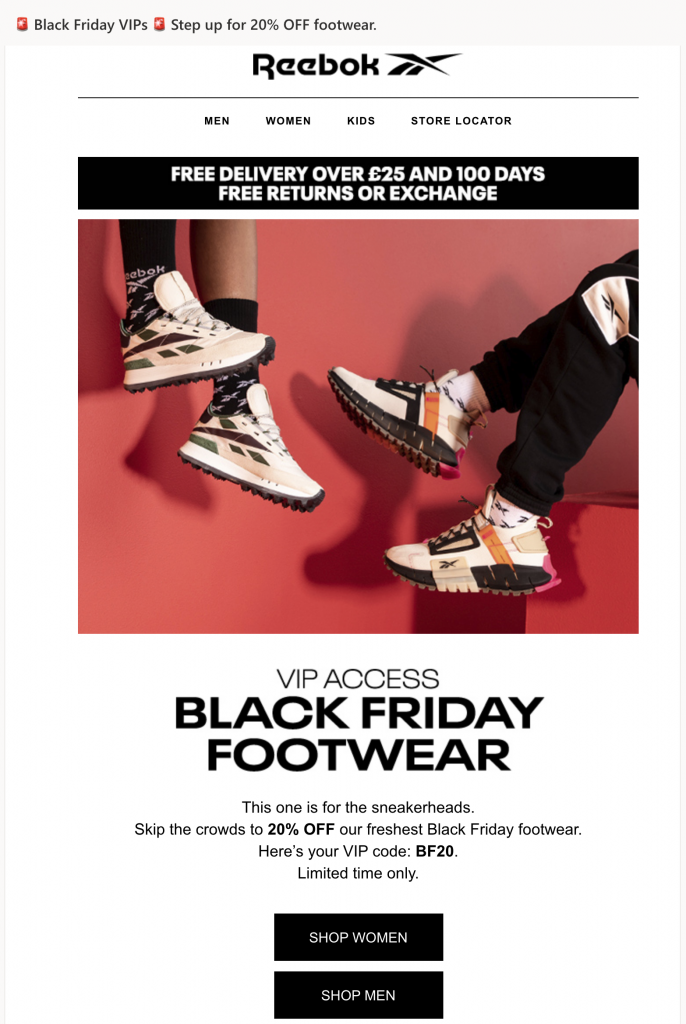
Reebok got ahead of the game by sending this email out 2 weeks in advance.
The most popular day for launching sales campaigns appeared to be Monday 23rd November, which was the date selected by 20% of our sample.
How many emails did businesses send out?
Here is where we always see the biggest range. Where we have some businesses went super overboard, many other businesses opted to send fewer emails, or even just one email campaign on the big day.
Our analysis shows the most popular number of emails to send over the sales period ranged between 5 and 6.
The highest number of promotional "Black Friday" emails we received from one brand was 21 - more than double than last year where the highest number was just 10!
What were the email subject lines like?
With so much competition around this heated sales period, it's interesting to observe the trends surrounding email subject lines. As the subject line is what makes your email really stick out in the customer's inbox, businesses tend to go all out to get noticed during this time of year.
Interestingly, almost 10% fewer businesses in our sample decided to use the phrases "Black Friday" / "Cyber Monday" in their email campaigns compared to last year; instead opting for more creative choices.
This year however, we did see a sharp rise in the proportion of businesses using emojis in their subject line, which was in 2020 up 16%, with 58% of companies opting for a colorful emoji.
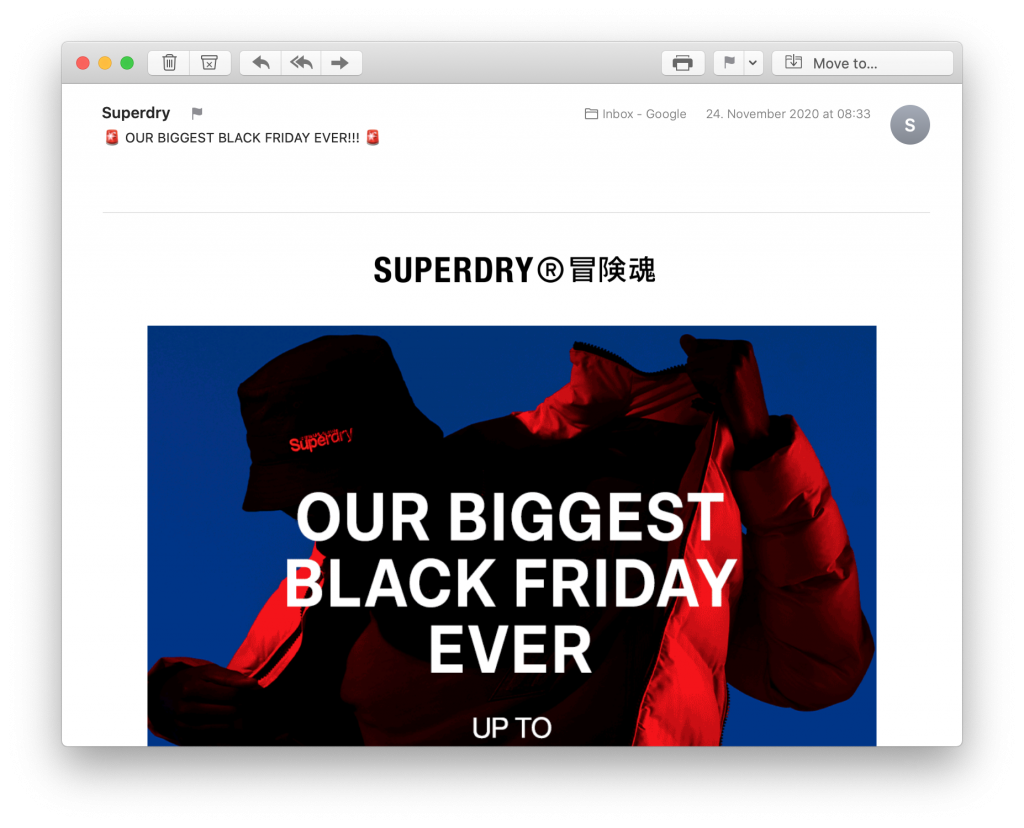
Emojis and keywords play a big part in making subject lines pop.
Which other design techniques were used?
While the subject lines are super interesting, we are just as intrigued by the design techniques used by brands in their email promotions. With "Black Friday" being such a major sales event for so many, we often see businesses pulling out all the stops to get their sale noticed.
One common design technique we see year upon year is a countdown timer. This is a smart way for businesses to pile on the time pressure and generate a sense of urgency, pushing customers to shop shop shop. Last year, 17% of our sample opted to incorporate a timer into their design, whereas this year it was only 13%.
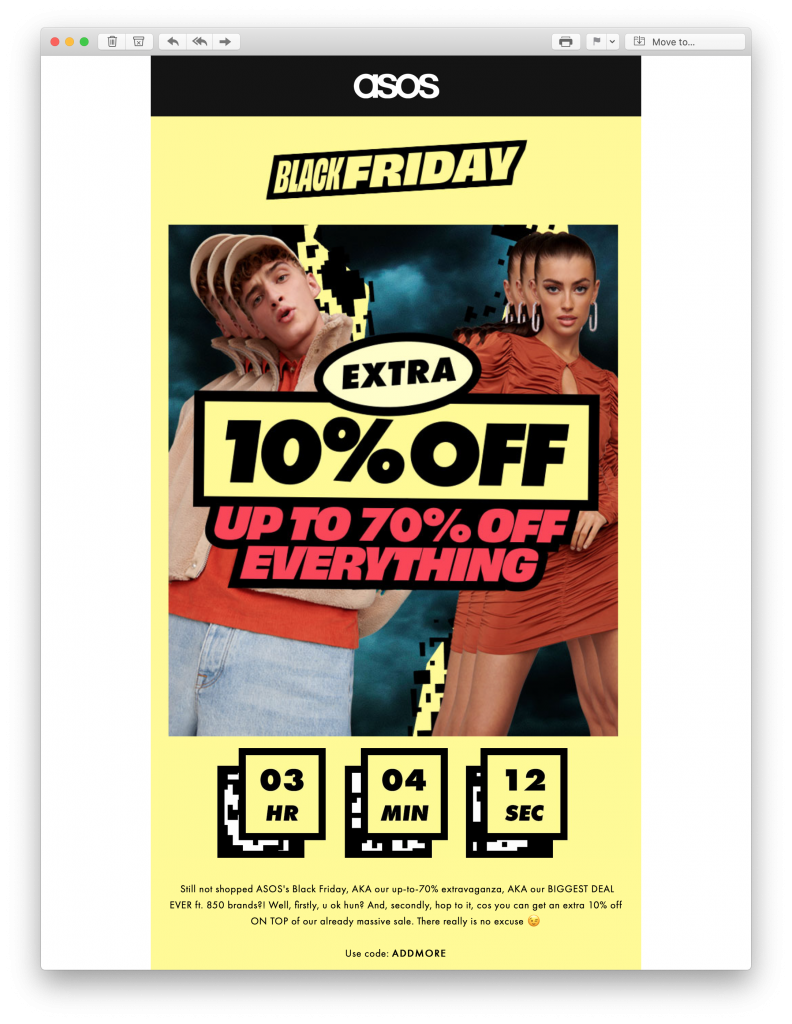
A countdown timer like this one from ASOS allows businesses to generate a sense of urgency in their campaigns.
Finally, as self-confessed GIF enthusiasts, we also couldn't resist taking another in depth look at the proportion of businesses using GIFs in their campaigns this year. At 38%, this was slightly up on last year, where just 34% of our sample chose to feature an eye-catching animation.
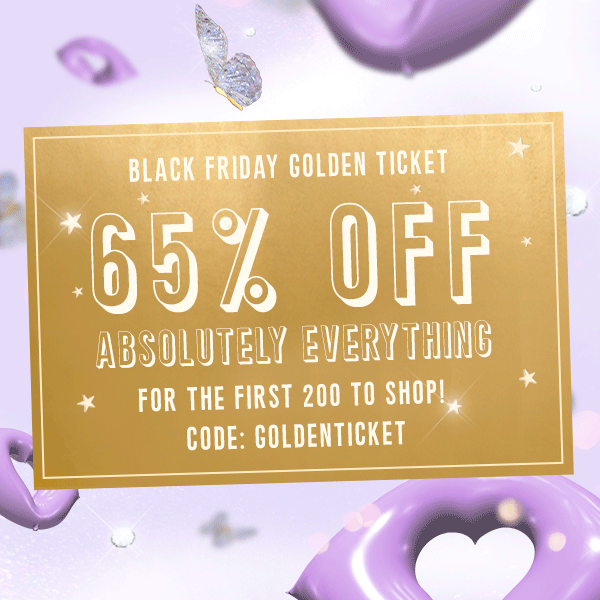
ISAWITFIRST captured customers' attention this year with a range of eye-catching GIFs.
Hopefully you've found this roundup of everything that went down in 2020 during "Black Friday" useful. If you feel like trying out some of these techniques in your next email campaign, why not give Mail Designer 365 a go? Mail Designer has all the creative resources and design tools you need to build amazing email campaigns. Sign up free today to test the service.
Until next time,
Your Mail Designer 365 Team

